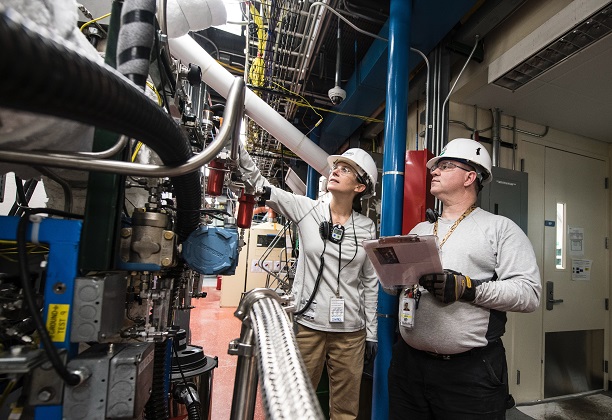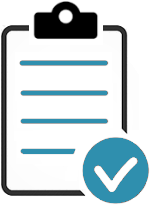The company should determine what needs to be monitored and measured; therefore, it needs to determine the methods for measurements, monitoring, analysis, and evaluation to secure authentic results. Using this data, the company can evaluate the effectiveness and impact of its quality management system.
Contents
This clause allows management to review the data and ask relevant questions such as “is our management system effective, adequate, and suitable to our company?". The documents need to be filed so that the auditor has access to a consistent set of evidence-based results checked against the policy.

The purpose of this procedure is to establish and define the roles and responsibilities for detailed monitoring, measurement, analysis and performance evaluation.
The process includes the recording and tracking of progress against identified actions and targets which provide the mechanism for safety assurance that ensures our safety processes and systems are able to effectively manage our safety risks. Where assurance cannot be given, it provides an opportunity for prompt intervention and action planning.
Our Monitoring Measuring & Analysis Procedure is proven to work.
The ISO 9001 clause 9’s heading is Performance Evaluation with clause 9.1's heading: Monitoring, Measurement, Analysis, and Evaluation. Under clause 9, there are three subclauses, namely;
Under the general section, the company must determine what processes need to be monitored and measured. To guarantee valid and auditable results, the monitoring, analysis, measurement, and evaluation methods need to be predetermined. Alongside that, it must also be determined;
The company also needs to determine the following;
The needs of a company are likely to change over time. The monitoring objectives will need to be adjusted from time to time to keep the data and results valid.
As the company grows, new measures and procedures need to be developed and implemented. Regular reviews help to show the effectiveness of the QMS. The focus of your processes should be on process conformity, product conformity, service conformity, and continuously improving the QMS effectivity.

The measurement process involves the physical measurement of product characteristics. The measurement and data analysis processes for your company QMS should consider measuring resources and methods like;
The measurement process usually involves physical measuring. This includes using;
If all measurement processes are not fully recordable, you can use the company's knowledge of;
This will help you determine which measuring methodology to apply to each process and include them in your QMS.
Verifying product characteristics can be applied through statistical methods and process parameters that include;
The relevant personnel needs training in using methods, measuring tools, and analysis.
Our Monitoring Measuring & Analysis Procedure is proven to work.
Customer satisfaction should be monitored to determine to which degree their expectations and needs are being fulfilled. The methods for obtaining this information need to be determined by the QMS.
Methods of measuring and monitoring the way customers perceive your company can be done through;
Producing high levels of customer satisfaction is an essential metric tool for gathering real-time information to improve your QMS processes and product. Each customer will be different and present different needs; you will have to use additional measures and controls to measure and analyze the data.
Your company is expected to have a clearly defined process for defining customer satisfaction indicators. This process should also include;
To continuously improve on customer satisfaction, you will need to review customer feedback and trends constantly. This will be your baseline to use for both internal and external clientele.

Your company should use the appropriate data and information gathered by monitoring and measuring to evaluate the conformity of the following;
Subclause 9.1.3 has a new requirement set out, and that is to evaluate the effectiveness of actions taken to address any and all risks and opportunities. This subclause requires that;
To do a proper analysis, you will have to collect data that relates to the effectiveness, efficiency, and performance of;
The best evaluation is done when you collect data year-over-year and do a trend analysis. This will identify opportunities for improvement, determine long-term processes, corrective actions that need to be executed for any negative trends.
The role of management is to continuously review the data and analysis done by the Quality Management team.
All methods of collecting data should be recorded and filed in a manner that allows for transparency and auditing and provide transparent processes for the following;
Our Monitoring Measuring & Analysis Procedure is proven to work.
Updated: 26th February 2022
Author: Richard Keen

Richard is our Compliance Director, responsible for content & product development.
But most importantly he is ISO's biggest fanboy and a true evangelist of the standards.
Learn more about Richard

Don’t Try to Manage It All Alone!
Our ISO Auditors and Quality Manager Trainers have been in this industry for years, and since 2002 we’ve been providing thousands of small businesses and large corporations with the tools they need to get certified.
Instead of trying to create everything you need to follow this process from scratch, use ours. We have procedures, templates, checklists, process maps, forms and gap analysis tools to help you control your documented information without missing a single input or output.
Before you invest all the hours reinventing the wheel, before you spend countless dollars outsourcing the task — try our templates.
| QMS ISO 9001 |
EMS ISO 14001 |
OH&S ISO 45001 |
|
|
Monitoring, Measuring & Analysis Procedure The purpose of this procedure is to establish and define the roles and responsibilities for detailed health and safety monitoring, measurement, analysis and performance evaluation. The process includes the recording and tracking of progress against identified actions and targets which provide the mechanism for safety assurance that ensures our safety processes and systems are able to effectively manage our safety risks. Where assurance cannot be given, it provides an opportunity for prompt intervention and action planning. Forms & Reports also included:
Free Download - Control of Calibrated Equipment Procedure - this will give you a good idea of what to expect when you purchase the procedure. |
|
|
$29 AUD |
Pay by Credit Card, Debit Card, PayPal or Apple Pay.


|
Please read our Money Back Guarantee. |
Bought by Small Businesses and Large Corporations our templates have been sold online and CD since 2002.
Used by:
The Templates are used by first-timers following our step-by-step, clause-by-clause guidance documents; and experienced Quality Managers wishing to streamline and improve their existing documentation.
The application of our templates and quality manuals is scalable and generic; regardless of the size and type of organization. The elements that form the quality management system are the same.
1. Our customizable templates save you time and money by offering a streamlined process to create your quality documentation
2. They’ve got everything you need in one simple template
3. Proven to work our templates have helped thousands of businesses big and small achieve certification
4. Documents use styles to make reformatting and rebranding a breeze
5. Our templates are generalizable for any industry or sector. The application of our templates is scalable and generic; regardless of the size and type of organization.